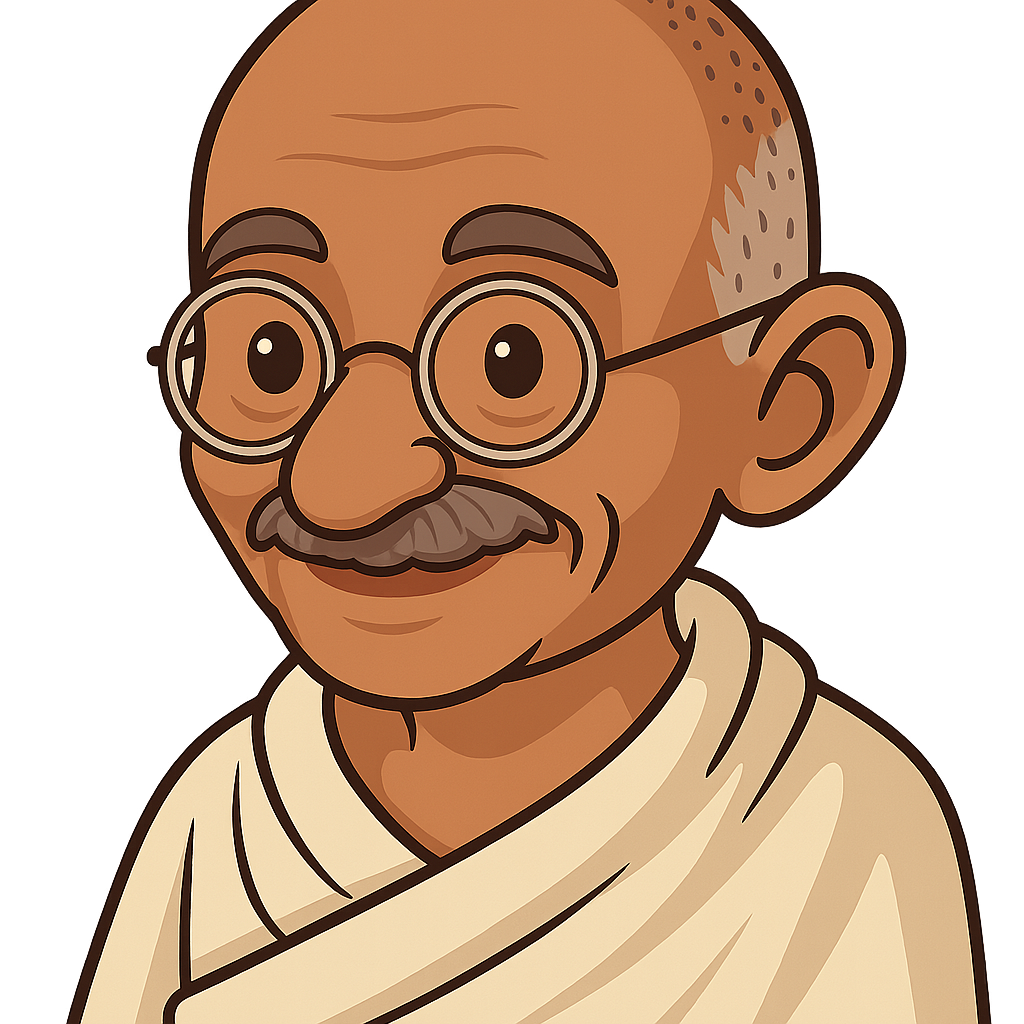Mohandas Gandhi: My Life for Peace
Hello, my name is Mohandas Karamchand Gandhi, but many people came to call me Mahatma, which means “great soul.” I want to tell you the story of my life and my belief that peace is the most powerful way to change the world. My journey began in a town called Porbandar, India, where I was born on October 2, 1869. India at that time was a vibrant land of ancient traditions, but it was also part of the vast British Empire. I was a quiet and serious boy, not very good at sports and often afraid of the dark. My parents, however, taught me lessons that would guide my entire life. My mother was deeply religious and taught me the importance of compassion for all living beings, while my father, a local government official, valued honesty above all else. These early values became the foundation of everything I would do. As was the custom, I was married at the young age of thirteen to my dear wife, Kasturbai. When I was eighteen, in 1888, I made a brave decision. I sailed across the ocean to London, England, to study law. It was a world away from my home, and I felt lonely at times, but I was determined to succeed and make my family proud.
After I became a lawyer, my life took a turn I never expected. In 1893, I accepted a job in South Africa, which was also under British rule. I thought it would be a short trip, but it changed me forever. One day, I was traveling on a train in a first-class carriage, for which I had a valid ticket. A white passenger complained, and I was ordered to move to a lower-class car. When I refused, explaining I had a right to be there, I was forcefully thrown off the train at a dark, cold station. That night, sitting in the waiting room, shivering, I made a choice. I could either return to India and forget the injustice, or I could stay and fight it. I chose to fight. This experience opened my eyes to the deep prejudice faced by Indians in South Africa. I decided then that I would dedicate my life to challenging this unfairness, but I would do it without violence. I developed a method of protest I called Satyagraha, which means “truth-force.” It was the idea that we could resist unjust laws peacefully through civil disobedience, using our courage and truth as our only weapons.
In 1915, I returned to India. I saw that my own people were suffering under British control. They were treated as second-class citizens in their own country, and many lived in terrible poverty. I knew my work with Satyagraha had to continue here. I began traveling all over India, by train and on foot, to see the real conditions of the people and to listen to their struggles. To connect with them and to protest Britain's control of our economy, I gave up my Western-style suits and began wearing a simple, hand-spun cloth called khadi. This was a powerful symbol. It showed that Indians could be self-reliant and did not need to depend on British goods. My most famous act of peaceful protest was the Salt March in 1930. The British had a law that made it illegal for Indians to collect or sell their own salt; we were forced to buy it from the British, who taxed it heavily. To protest this unjust law, I led a group of followers on a 240-mile walk to the Arabian Sea. The march grew larger every day, and by the time we reached the coast, there were thousands of us. There, I bent down and picked up a lump of salty mud, a simple act of defiance that told the world we would not obey their unfair rules.
For decades, we continued our struggle through nonviolent protests, marches, and strikes. Finally, after so much effort and sacrifice, India achieved its independence on August 15, 1947. It should have been a moment of pure joy, but it was also a time of great sorrow for me. The British decided to partition the country, creating India and the new nation of Pakistan. This division led to terrible violence between Hindus and Muslims, people who had been neighbors for centuries. My final mission was to plead for peace and unity. I fasted, hoping my personal sacrifice would stop the fighting. Tragically, on January 30, 1948, my life was ended by an assassin who disagreed with my message of tolerance. Though my time on Earth was over, I hope my message has lived on. I wanted to show the world that you don't need weapons to be strong. The greatest strength lies in truth, love, and peaceful action. My ideas inspired other leaders fighting for justice, including Martin Luther King Jr. in the United States. Remember that your voice matters, and even the gentlest soul can shake the world in a powerful way.
Reading Comprehension Questions
Click to see answer
